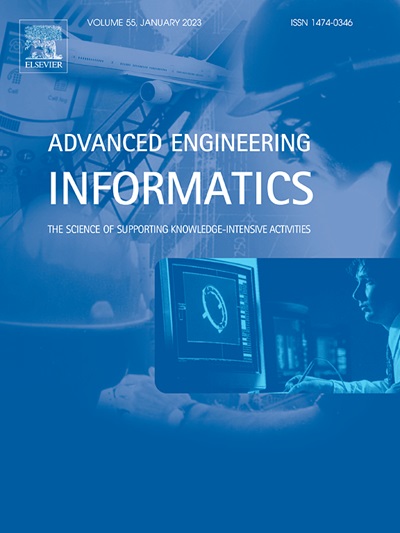Developing YOLOv5s model with enhancement mechanisms for precision parts with irregular shapes
IF 8
1区 工程技术
Q1 COMPUTER SCIENCE, ARTIFICIAL INTELLIGENCE
引用次数: 0
Abstract
Given the precision issues caused by part irregularities and occlusion when intelligent assembly technology is used to identify and classify aerospace parts, this study develops a You Only Look Once Version 5 Small (YOLOv5s) model with enhancement mechanisms for detecting precision parts with irregular shapes. First, offsets and learnable parameters are employed in the convolutional layer and combined with the Cross Stage Partial Bottleneck with 3 convolutions (C3)module of the YOLOv5s neck network to enhance the model’s feature extraction capability for irregular objects. Second, the processing speed and recognition accuracy are increased by optimizing the loss function using the smallest possible distance between the corner points of the predicted boxes and the ground truth. Finally, a method is proposed for converting spatial information to channel information in the backbone and neck, thereby reducing information loss and enhancing detection accuracy for small targets. In this study, a dataset of precision parts with irregular shapes based on aerospace components was conducted and experimentally validated. The findings show that the suggested method outperforms YOLOv5 and the most current YOLOv9, increasing identification accuracy to 93.7 % and achieving a speed of 102.04 frames per second. This approach delivers improved detection accuracy for tiny targets, occlusions, and irregularly shaped components as compared to two-stage and one-stage detection algorithms. Furthermore, it maintains a pace of 100 frames per second while striking an optimal balance between speed and accuracy, offering a practical solution for the quick and accurate identification of precision components in smart assembly technology.
求助全文
约1分钟内获得全文
求助全文
来源期刊

Advanced Engineering Informatics
工程技术-工程:综合
CiteScore
12.40
自引率
18.20%
发文量
292
审稿时长
45 days
期刊介绍:
Advanced Engineering Informatics is an international Journal that solicits research papers with an emphasis on 'knowledge' and 'engineering applications'. The Journal seeks original papers that report progress in applying methods of engineering informatics. These papers should have engineering relevance and help provide a scientific base for more reliable, spontaneous, and creative engineering decision-making. Additionally, papers should demonstrate the science of supporting knowledge-intensive engineering tasks and validate the generality, power, and scalability of new methods through rigorous evaluation, preferably both qualitatively and quantitatively. Abstracting and indexing for Advanced Engineering Informatics include Science Citation Index Expanded, Scopus and INSPEC.
 求助内容:
求助内容: 应助结果提醒方式:
应助结果提醒方式:


